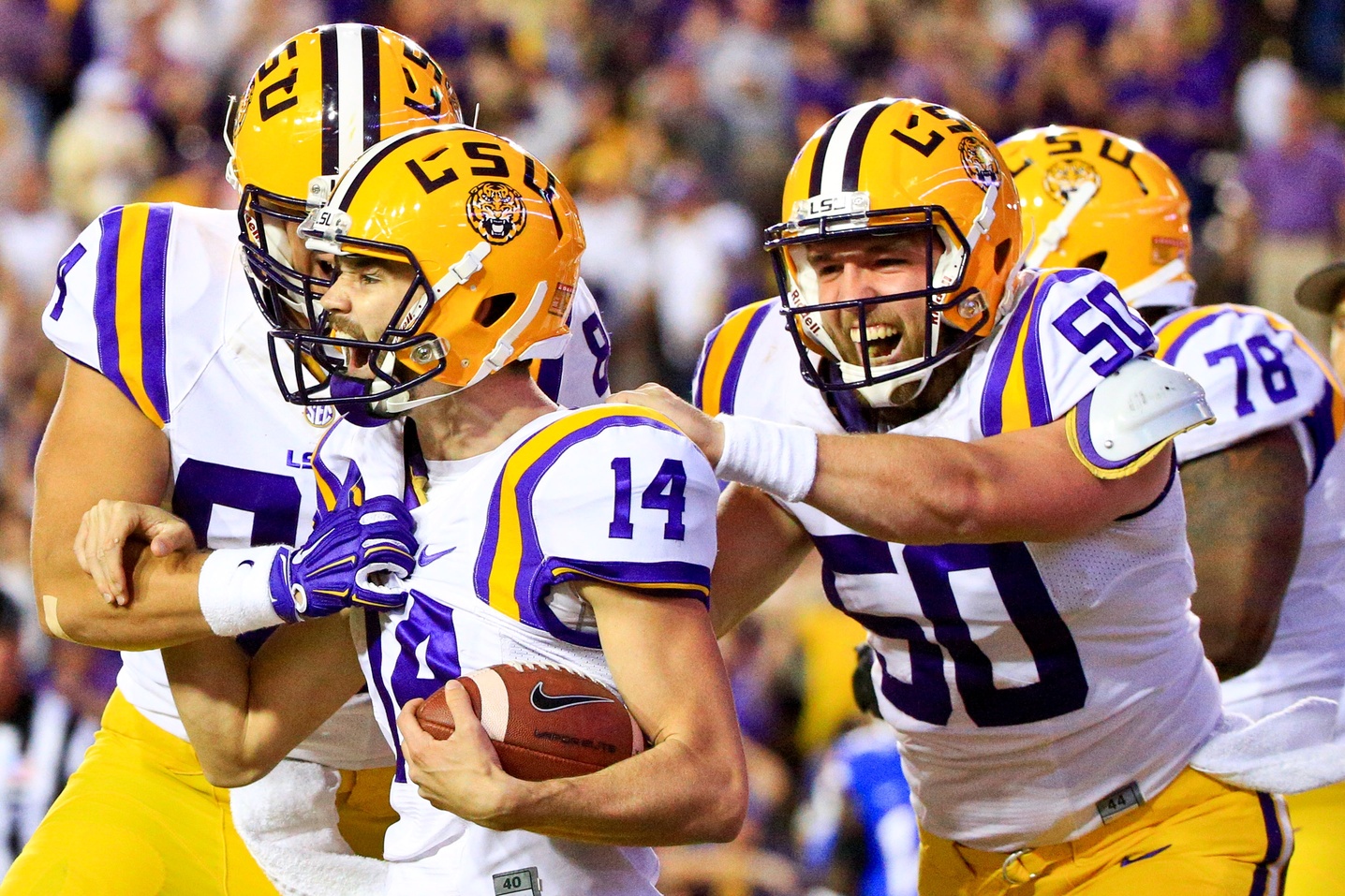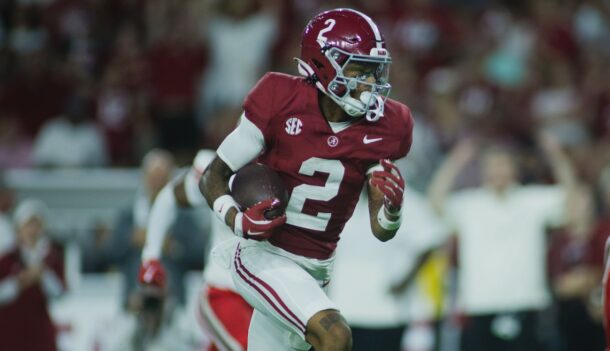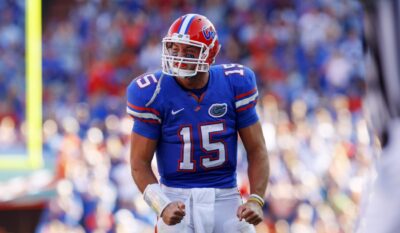
Best and worst strategic decisions by head coaches at their current SEC schools
Last week, a chart revealing SEC coaches’ records in close games was released.
While there was a surprise that Nick Saban’s record in close games was just .500, and some of the least successful coaches had the best records in close games, a hidden truth may have just been revealed.
Namely, who the best strategists in the SEC really are.
It seems strategy, perhaps the primary attraction of football, is often de-emphasized in sports coverage. After all, one Louisiana-based writer suggested the reason Les Miles won 70 percent of games decided by a touchdown or less at LSU is because the school runs the ball so much, thus keeping scores low and competitive.
As if a team with Leonard Fournette shouldn’t run the ball.
Others stated Alabama was so powerful the only way it would lose would be in a close game.
There’s some truth to that when considering that since Nick Saban has become Alabama’s coach, the Crimson Tide has never lost a game by more than 14 points.
Still, what does it say about Saban that Alabama is a good-but-not-great 17-14 in one-score games during his Tuscaloosa tenure?
Commenting on strategy is often wrongly called “second-guessing” as if fans and media never ask “why is the coach doing this?” during the course of the game.
While talent wins out over the course of a season, the wrong strategy at the wrong time can easily result in a defeat for the stronger team.
Here’s a look at the best, and worst, strategic moments among contemporary SEC coaches at their current schools. Coaches at the first year at the helm get a bye, but those returning must live with their records.
Jim McElwain, Florida (5-1)
BEST MOVE: Down 20-7 and facing 4th-and-6 at the Tennessee 25-yard line last year, it appeared McElwain was going to go for an easy 3 points and kick a field goal to put the Gators within 10 in the third quarter. Instead, he called a timeout and decided to go for it, setting the tone for Florida’s 28-27 comeback victory when Will Grier tossed a 21-yard completion to Brandon Powell for a first down, setting up Kelvin Taylor’s touchdown to bring the Gators within a score.
WORST: Understanding it’s his first year at the helm, nobody told McElwain what happened five years ago against LSU? See next selections.
Les Miles, LSU (39-18)
BEST MOVE(S): He did it not once, but twice! The fake field goals against Florida in 2010 and 2015 were epic. If it wasn’t enough that Miles had the guts to try a fake with 35 seconds left down by 3 points six years ago by throwing for a first down to kicker Josh Jasper in a dramatic 33-29 victory in Gainesville, he called for it again last year as Trent Domingue scored the winning touchdown in the fourth quarter in a 35-28 victory against the Gators.
WORST MOVE: When a screen pass on third down failed and Stevan Ridley was tackled by Ole Miss linebacker Patrick Trahan in bounds with 26 seconds left at midfield down 25-23 against Ole Miss in 2009, LSU inexplicably let 17 seconds run off the clock before calling their final timeout. When Jordan Jefferson connected with Terrence Toliver inside the 10 on the next play, Miles did not have his field goal team prepared to instantly run on to the field, nor did he have a second play called as Jefferson spent the final second of the game in suicide spiking the ball.
Dan Mullen, Mississippi State (16-9)
BEST: Dak Prescott becomes the Bulldogs’ leading ball-carrier in 2014. Maybe, just maybe, you can’t scramble to a national championship. But Prescott proved you can at least scramble to a No. 1 ranking. Mississippi State defeated No. 8 LSU, No. 6 Texas A&M and No. 2 Auburn on successive weeks with Prescott calling his own number on running plays a team-leading 22, 23 and 21 times in those games, resulting in 303 combined yards and six total rushing touchdowns. The Bulldogs scored 34 points against an LSU team that hadn’t allowed an offensive score in 10 quarters coming into the game. It may not take a genius to give a player like Prescott free reign of the offense. But in doing so, everyone on the Bulldogs shined, including running back Josh Robinson, who rushed for 197 yards on just 16 carries against LSU.
WORST: Down 30-24 against LSU in 2009 with the ball at the Tigers’ 2-yard line and less than two minutes to play, the Bulldogs attempted to muscle the ball in for the winning score with three runs up the middle and one incomplete pass. Admittedly, it’s what the textbook calls for you to do, but if you couldn’t get the ball in on two rushes previously, what makes you think a quarterback sneak with no momentum will carry Tyson Lee past the goal line on fourth down?
Gus Malzahn, Auburn (12-7)
BEST: Going for the return and not the block in the 2013 Iron Bowl. Generally speaking, blocks are the cause of a field goal attempt not coming off in less than 1.25 seconds. It’s simple and logical to put Chris Davis under the goal posts in the likely event a 57-yard attempt falls short … and oh so brilliant.
WORST: Last year’s 27-19 loss to Ole Miss earned Malzahn much criticism for his play-calling in the red zone. On multiple trips in the second half against the Rebels, Malzahn’s play-calling became increasingly predictable: first a run, then two incomplete passes on the final two drives, resulting in field goals rather than touchdowns. Auburn’s previous trip inside the 10 wasn’t much more imaginative: a run, a draw play everyone saw coming from newly inserted quarterback Jeremy Johnson, and then a sack prior to settling for another field goal.
Derek Mason, Vanderbilt (5-3)
BEST: It didn’t happen in the fourth quarter, and the old adage is that if you need trick plays to win, you’re not a very good team in the first place. No matter. The Commodores’ “Sneaky Pete” play last season against where Caleb Scott had jogged to the sideline and squatted down before catching a 37-yard touchdown pass against a dumbfounded Kentucky secondary gave Vandy the touchdown that would ultimately net a 21-17 victory.
WORST: When your roster is so young you have to start 31 freshmen, you might forgive a coach for wanting to put an experienced LSU transfer like Stephen Rivers behind center to start out with. Unfortunately, there was a reason why Rivers had only thrown two passes for the Tigers, and he showed why after failing to put any points on the scoreboard in a 37-7 opening-day loss to Temple in 2014. After that, Mason began a rotation of four different quarterbacks, and the offense could never find a spark. Winnable games were lost as the offense had no cohesion.
Kevin Sumlin, Texas A&M (11-8)
BEST: Not reigning in Kyler Murray against South Carolina. You might figure when a freshman makes his first start against a struggling opponent, the best strategy is not to give that opponent any unnecessary chances to win. Instead, Murray rushed for 156 yards and threw for 223 more in rolling up a much-needed five touchdowns against the Gamecocks last year.
WORST: Not allowing freshmen to speak to reporters. They’ve been interviewed for years by reporters covering their high school games and recruiting, but suddenly once they become Aggies, Sumlin believes in treating his players like children. No, this is not the same as electing to go for it on 4th-and-25. But it speaks of such an old-school mentality that one can’t help but wonder if it’s part of an atmosphere that allowed two quarterbacks to transfer this season or allowed Johnny Manziel to run wild.
Nick Saban, Alabama (17-14)
BEST MOVE: You know it. It’s 24-24 early in the fourth quarter, but rather than just kick the ball deep, Saban elects to go for an onside kick when he sees Clemson’s return team pinching in and leaving the sidelines uncovered. It’s recovered and Bama goes on to win 45-40. Who’d have thought after the 2013 Iron Bowl that Adam Griffin would be looked upon as such a hero? Alabama’s come a long way from the days when its gunners would line up for kickoffs kneeling on one knee under Ray Perkins.
WORST MOVE: People will look to Griffin’s long field goal attempt in the Iron Bowl three seasons ago, but how can you fault Saban for trying to win the game? A better question would be to ask why he benched Jake Coker for Cooper Bateman prior to the Ole Miss game last season. Bateman was said to be more athletic and did put up decent stats, but the Crimson Tide trailed by 20 points when Coker relieved him in a 43-37 loss. Coker never lost the helm again en route to a national championship.
Hugh Freeze, Ole Miss (7-9)
BEST MOVE: People may point to Ole Miss’ 43-37 victory last year as outlasting the Crimson Tide rather than beating them. After all, Ole Miss had a 20-point lead at one point. But the fact of the matter is by relying on Chad Kelly instead of a ground game that didn’t net 100 yards to help preserve the lead, the Rebels were able to mount two more touchdown drives and needed both of them to win the game after taking a 30-10 third-quarter advantage.
WORST MOVE: Down 10-7 with nine seconds left at the LSU 25-yard line in 2014, Freeze sent his offense back on the field for one more play rather than attempt the tying field goal. Bo Wallace was intercepted, and what could have been overtime and a chance at an 8-0 record was the beginning of a season-ending collapse for the Rebels.
Mark Stoops, Kentucky (5-7)
BEST: Trailing by two scores in the second half to South Carolina in 2014, Stoops changes his offense so tailback JoJo Kemp can take 10 straight snaps directly from center. The Gamecocks’ defense was confused enough to allow 110 yards and 2 touchdowns before Alvin Dupree’s 6-yard interception return with 2:29 remaining provided the winning score in a 45-38 Wildcats victory that could be argued as the beginning of the end for Steve Spurrier’s coaching career.
WORST: Five weeks into the 2015 season, the Wildcats were guided by Kentucky native Patrick Towles and had a 4-1 record. Kentucky finished 5-7 and now Towles is at Boston College. What appeared to be a promising career became a nightmare as Towles is benched twice only to be asked to come off the bench and lead the Wildcats back to victories when his replacement, Drew Barker, proves to be no better. It’s true Towles struggled at midseason, but doesn’t a year and a half of success at least merit a start against Charlotte when times are tough?
Butch Jones, Tennessee (6-9)
BEST MOVE: With the Vols down 24-3 to Georgia last year and a 2-4 record staring his team right in the face, Jones saved the season by opting to go for it on 4th-and-2 at midfield and 4th-and-8 from the Bulldogs’ 39 on a late second-quarter drive. Failure to convert either of these downs would have likely led to Tennessee defeat. Instead, Joshua Dobbs hit Josh Smith for a 39-yard touchdown pass on the second of the two do-or-die conversion attempts, and when Georgia fumbled away the ensuing kickoff, the comeback to a 38-31 Tennessee victory was on.
WORST MOVE: Not even close. After Jalen Hurd’s 10-yard touchdown run gave the Volunteers a 26-14 lead midway in the fourth quarter at Florida last year, the decision to attempt a 2-point conversion was obvious. Instead, Jones asked Aaron Medley to kick an extra point, which put the Vols in a position to fail. Fail they did when quarterback Will Grier rallied the Gators back by converting five fourth downs on two touchdown drives, including a 63-yard touchdown pass to Antonio Callaway for the victory with 1:26 left.
Bret Bielema, Arkansas (3-10)
BEST MOVE: Going for two in the first overtime period in a 53-52 victory against Ole Miss last year. Come to think of it, if your team has scored 51 points in the game, it’s probably a better than 50-50 chance you can convert 4th-and-short.
WORST MOVE: There’s a certain amount of brilliance to Bielema’s playing for the field goal that would give Arkansas a potential 53-51 victory against Mississippi State last year rather than continuing to ride the arm of Brandon Allen for a potential touchdown. Bielema stated he wanted the Bulldogs to use up their timeouts so they would have none left for the ensuing possession, but a touchdown would have meant Dak Prescott would have to score a touchdown of his own with less than a minute on the clock.
By playing it the way Bielema did, perhaps the best quarterback in the SEC last year would have had 39 seconds and perhaps 30-40 fewer yards to gain to set up a winning score. Play for a touchdown and a 2-point conversion, and the worst thing that Prescott will likely be able to do if Arkansas is successful is to send the game into overtime.
Yes, a 29-yard field goal attempt should be made, and the fact the kick was blocked gave Mississippi State their 51-50 victory. But even if the kick was good, Bielema was giving Prescott the chance to beat his team, not tie them.







